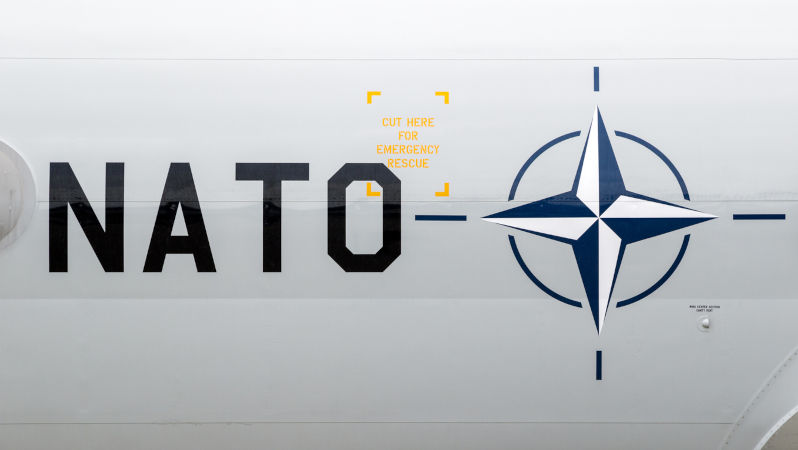Not content with expanding its membership from the original 12 to 31 nations, the North Atlantic Treaty Organisation is making a grab for a presence in the Asia Pacific as well.
From 1949, NATO’s commitment to defend any member if attacked (Article 5) applied only to the North American and European mainlands and territories north of the Tropic of Cancer, as well as modern Turkiye and ‘French Algeria’. Now, those boundaries (Article 6) are being treated as merely semantic, and the designation ‘NATO Partner’ has been amended so that Japan, South Korea, Australia and New Zealand can join an ‘Individual Tailored Partnership Plan’. It looks like a prep school for joining NATO.
Finland became the latest NATO member this year, and Sweden’s membership depends on Turkiye and Hungary joining the consensus. President Erdogan’s price is F16s from the US, while President Orban claims the delay is merely technical. NATO’s decades-long expansion across Europe led to Russia’s eventual invasion of Ukraine. But NATO, having promised Ukraine eventual membership, still dangles that prize before President Zelensky, delaying it so that Article 5 does not apply to having to defend it.
For years, the neon sign advertising membership of NATO has flicked on and off in Australia and Japan. In July 2022 it lit up again when for the first time, leaders of the ‘AP4’ – Australia, New Zealand, Japan, and South Korea – went to the NATO summit in Madrid. The then Director-General of ASIO, Duncan Lewis, told the ABC that NATO ‘realises that nothing is far distant any more – that its interests are invoked on the other side of the world’. That suggests China is in NATO’s sights as its next enemy. At the meeting, China was identified as ‘a new strategic concept’ for NATO.
In July this year, the AP4 again attended the NATO summit in Vilnius, but France opposed opening a NATO liaison office in Japan, and NATO’S China Strategic Concept was not prominent in discussion. That however hasn’t resolved Korean concerns that a prospective ‘Asian NATO’ will involve joint war operations against China. The South Korea–NATO agreement already stresses interoperability, technological cooperation, and developing ‘defence and security capabilities’. South Korean commentator Hae-won Jun complained that the people and their political representatives had not been consulted about what was being planned.
The South Korean National Assembly is obliged to approve or reject all treaties related to security, international organizations and relations, restrictions on sovereignty, the dispatch of armed forces, and the stationing of foreign forces. South Koreans are particularly sensitive about any provocation of their northern neighbours, or efforts to align Seoul militarily with Tokyo. The conservative, pro-US government in Japan, meanwhile, wants to ‘normalise’ its military forces and its capacity to go to war. Seeking to build an anti-China coalition, in August 2023 President Biden hosted the Japanese Prime Minister and the South Korean President at Camp David to encourage Japanese-South Korean reconciliation. The meeting produced a commitment to consult in the event of security contingencies. It read like a collective defence treaty.
After the summit however, US National Security Advisor Jake Sullivan denied that the trilateral security pledge represented a ‘new NATO for the Pacific’. He was well aware that any such alliance would not attract non-aligned Southeast Asian nations, and its provocation of China would not be welcomed by those, including the AP4, which seek to maintain important trade relationships with Beijing. Michael Green, who heads the US Studies Centre in Sydney, concluded that although China’s show of strength requires a regional alliance for the first time in seven decades, there’s no certainty about a full-fledged anti-China alliance. Yet he thought a collective security bloc suddenly looked more plausible, warning ‘Never Say Never to an Asian NATO’.
Both Korea and Japan have recently signed military cooperation agreements with Australia that might mean steps towards joining an Asian NATO. Prime Minister Albanese and Defence Minister Marles have agreed to a long succession of measures, from embedded intelligence, export controls, and technology dominance, to influential investments favouring the US and UK, as Mike Scrafton has pointed out here. (Australians need to know what lies beneath the new era of US-Australia strategic cooperation – Pearls and Irritations. 7 December 2023). Aligning Australian and American regulatory frameworks could ‘surrender any sovereignty capability’ according to Bill Greenwalt, the former US Under Secretary for Defense and an expert on America’s defence procurement laws. Dr Greenwalt told the ABC that in cooperating with the US, Australia will surrender to control by the US bureaucracy. Australia is left only to hope ‘that the US will remove process barriers that will allow the US to essentially steal and control Australian technology faster’.
Meanwhile, New Zealand hesitates over both AUKUS and NATO. A serious proposition for doing away with the nation’s armed forces altogether was raised in a recent book by New Zealanders Joseph Llewellyn and Richard Jackson, Abolishing the Military. Australians might consider it before we get dragged into a war alongside our new NATO allies against our major trading partner. So should the Australian government. They ought then to transparently explain their plans for our national sovereignty to the Australian people and their elected representatives.
Dr Alison Broinowski AM is a former Australian diplomat and a member of Australians fr War Powers Reform

